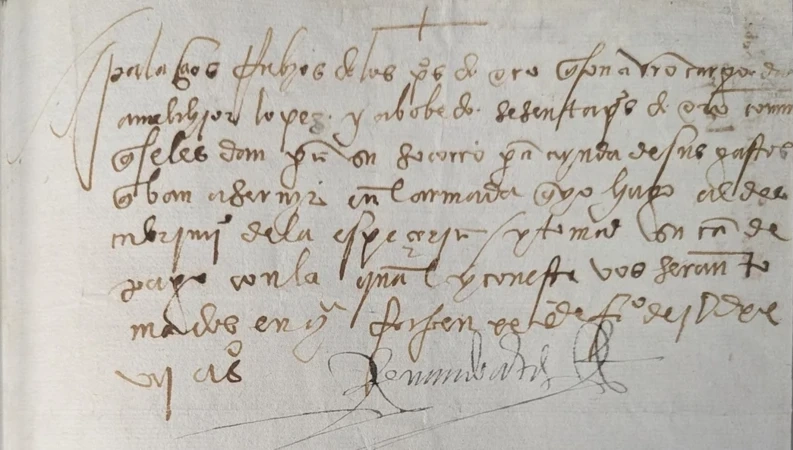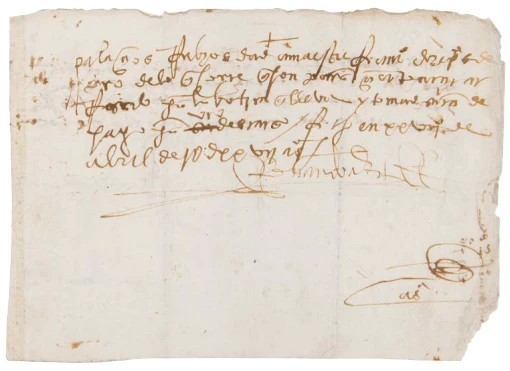
The manuscript signed by Cortés was stolen in the 1980s or early 1990s.
In the cloistered hush of an archive room, where light is meted out so as not to wound the paper, a witness from another world surfaces once more: a sheet written and signed by Hernán Cortés on February 20, 1527. Five centuries have passed since the ink was still wet; more than thirty years since it was wrenched from the collection safeguarded by Mexico’s National Archives and disappeared without a trace. Now, after a long passage through private hands and discreet auctions, the document has returned to Mexico, the fruit of an FBI investigation woven with patience and diplomacy.
It is no ordinary leaf of paper—though that scarcely needs saying—but essentially little more than a gold payment order, penned in sixteenth-century Spanish and addressed to his administrator, Nicolás de Palacios Rubios: sixty pesos of common gold for Melchor López and Alonso Boedo, “por su socorro para ayudar de sus gastos de la armada que yo hago al descubrimiento de la especiería.” That last word, especiería, unfurls a mental chart toward the Moluccas—today part of Indonesia—then the magnetic pole of Europe’s craving for spices: cloves, nutmeg, cinnamon. Between those lines one senses the machinery of an empire, the measured breath before venturing into an ocean of unknowns.

Hernán Cortés led the expedition that toppled the Mexica Empire.
The manuscript forms part of the “Hospital de Jesús” collection—autograph documents by Cortés held in Mexico’s National Archives. In the 1980s, as the collection was being microfilmed for preservation, archivists discovered that fourteen pages had been stolen, this order among them. Its trail resurfaced in 2015 in the catalogue of an American auction. With technical descriptions and comparative records in hand, the Mexican government proved its provenance and authenticity, prompting the FBI to open an investigation that led from New York to Atlanta, pursuing a trail that vanished and reappeared like a wisp of smoke. In the end, those who held it signed away all claims, and the road home lay open.
“Pieces like this are protected cultural property—precious fragments of Mexico’s history that must remain in its own archives,” stated Special Agent Jessica Dittmer, who directed the investigation. It was not the first time: in July 2023, the FBI had already returned another payment order signed by Cortés—this one for the purchase of “pink sugar”—which likewise regained its rightful place in the nation’s documentary memory.
This is not merely the retrieval of a stolen artifact; each recovered sheet restores a part of the collective chronicle. In the taut script and imperious tone of Cortés beats an age when decisions were committed to paper to challenge oceans. And in its return, five centuries later, lies the quiet certainty that history—when summoned—finds its own way back home.

In 2023, the FBI returned to Mexico another manuscript signed by Cortés and recovered in the United States.









Comments powered by Talkyard.